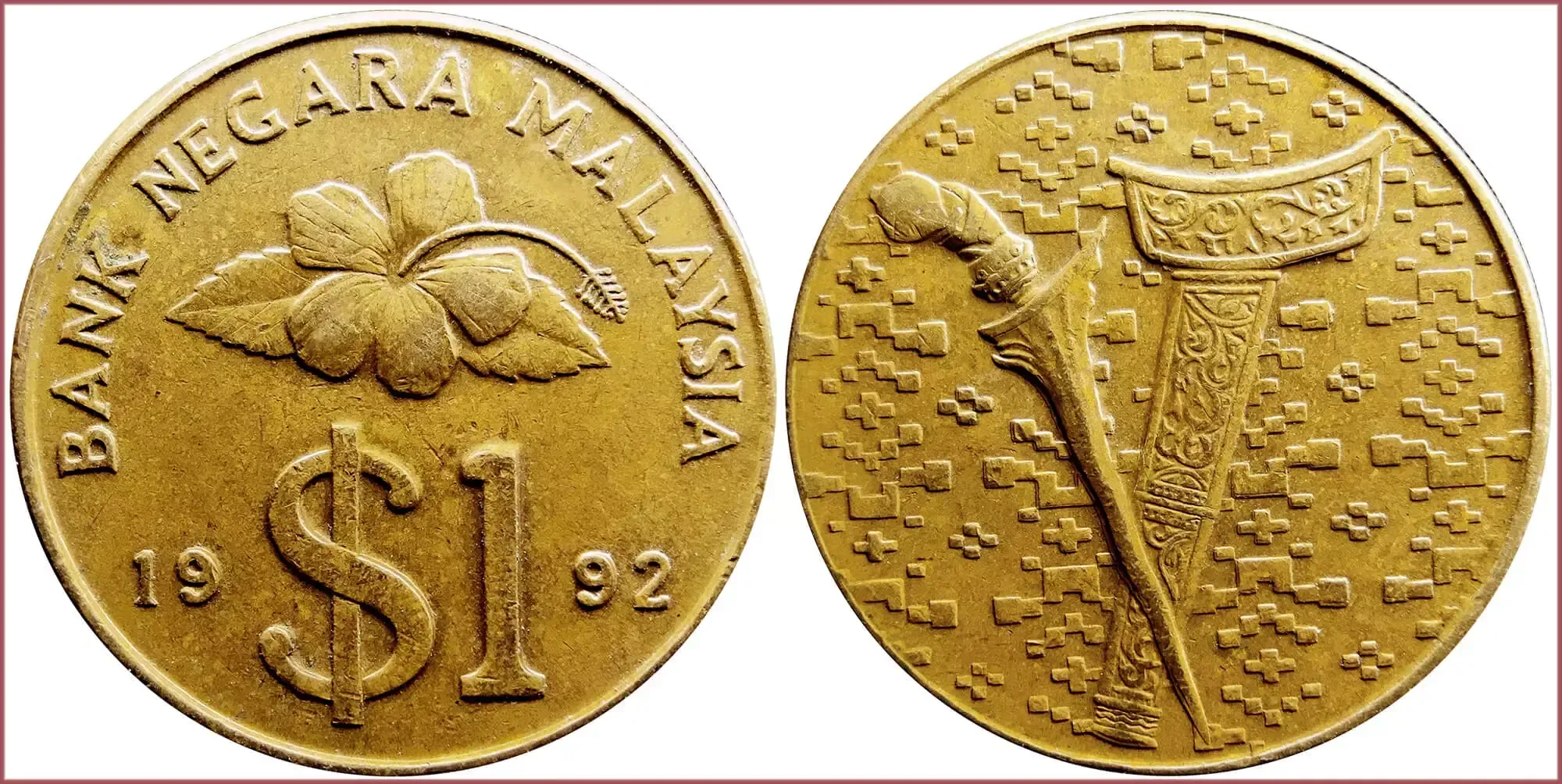RINGGIT: COIN OF MALAYSIA
1 ringgit, 1992: Malaysia
BANK NEGARA MALAYSIA: Central Bank of Malaysia.
$ 1: the denomination of the coin is indicated by the dollar symbol, which was used to denote the Malaysian ringgit until 1993.
In 1993, the currency symbol "RM" (Ringgit Malaysia) was introduced to replace the use of the dollar sign "$".
Hibiscus flower blossom from the coat of arms of Malaysia (hibiscus rosa-sinensis is the national flower of Malaysia, called bunga raya in Malay).
Kris or keris (on the background of local traditional fabric) — national dagger with a characteristic asymmetrical shape of the blade. Appeared on the island of Java, spread throughout Indonesia, the Philippines and Malaysia. The etymology is related to the Old Javanese word "ngeris", which means "to stab", "to pierce".
Mint of Malaysia (city Shah Alam).
Mintage: 139.041.750.
- Tin brass: 24 mm - 9.45 g
- Reference price: 0.6$
COIN RINGGIT — WHERE & WHEN (coins catalog: by names & emitents)
- MALAYSIA (1969-…): ringgit = 100 sen
- BRUNEI DARUSSALAM (1970-...): ringgit = 100 sen
RINGGIT as coin name.
Ringgit — coin and currency of Malaysia, as well as Brunei since 1967. It is divided into 100 Malaysian and Brunei sen respectively.
Malay is the official language in both these neighboring states; however, English remains widely used, given that the region's colonial past is closely linked to Great Britain. Therefore, it is not surprising that alongside the official local names (ringgit and sen), English-language counterparts (dollar and cent) coexist for the designation of Malaysian and Brunei money. It is the English names that prevail in foreign sources; the symbol for both ringgits — $.
Malaysian ringgit is the national currency of a country in Southeast Asia located on the Malay Peninsula and the island of Kalimantan. It was introduced in 1967 (instead the Malaya and British Borneo dollar). At first, the currency was called both the Malaysian dollar and the ringgit, and since 1975 — officially the ringgit. The first ringgit coins are dated 1969 (commemorative), since 1971 the minting of circulating ringgits begins (only the $ sign, without indicating the name; the legend "ringgit" appeared a little later on larger denominations).
Brunei ringgit also introduced in 1967. It tightly pegged with the Singapore dollar at a ratio of 1:1. The name "Brunei dollar" and the designation "$" are often used. On the coins of Brunei, both names coexist side by side: in Malay "Satu Ringgit" and in English "One Dollar". In the collections of numismatists, local sen are often found; ringgit is significantly rarer and more expensive.
The name of the ringgit coin literally means "jagged". In the 16th and 17th centuries in the territories of modern Malaysia, this term was used to refer to widespread silver Spanish dollars (an 8-real coin) with applied notches/serrations.

